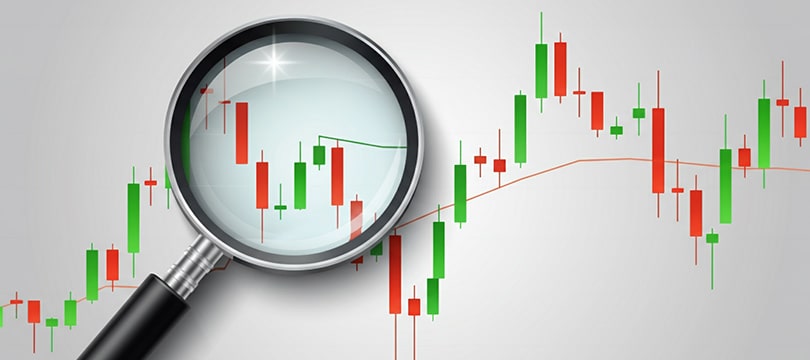The foreign exchange market is active 24 hours a day, but not all times of the day carry the same weight. In fact, some are definitely heavier than others. We're talking about the famous
London 4 p.m. fix (4 p.m. Italian time), also known as the
WM/Refinitiv fix.
This is a key moment for many institutional operators and can represent an opportunity or a threat for traders, depending on how it is managed.
We'll discuss it here. We'll see what happens during the fixing, what risks are involved, and how to protect yourself from these events, with technical and strategic measures.
What is the London fix
The London fix can be considered as a standardized procedure for determining the daily average reference exchange rate.
It is used as a
benchmark for institutional transactions, balance sheets, indexed funds, derivative products, and hedging operations.
It takes place every day at 4 p.m. Italian time (3 p.m. London time). At that moment, an average exchange rate is calculated for the main currency pairs, using data from real transactions and orders present in the spot market, collected in a 60-second time window (from 3:59:30 to 4:00:30 p.m.).
The calculation is performed by Refinitiv (formerly Thomson Reuters) according to transparent criteria:
- Only "tradeable" volumes are considered, i.e., executable orders at market;
- The final rate is a volume-weighted average;
- It is published shortly after the window closes.
The WM/Refinitiv fix was created
to provide an objective and replicable reference for the fair value of currencies. Mutual funds, ETFs, and passive managers make extensive use of it to determine the NAV (Net Asset Value) of portfolios with currency exposure.
Furthermore, it is used as a contractual reference rate by banks and multinationals that need to settle international exchanges fairly and transparently.
However, its very centrality has meant that the fixing has attracted
the interest of the most aggressive operators, often becoming an area of strong manipulation and inorganic volatility.
The risks of fixing
The 4 p.m. fix may seem like a purely technical event, but for many traders it represents an extremely
dangerous moment, especially if they hold open positions on major pairs such as EUR/USD, GBP/USD or USD/JPY during that window. Let's look at the main risks.
Sudden volatility
During the calculation window,
trading volume increases dramatically. Large banks and institutional desks must execute orders at prices close to the fix and, to do so, they pour tons of market orders in a few seconds. This generates:
- Sudden spikes (rapid movements of 10-20 pips or more);
- Violent reversals immediately after the window closes;
- False breakouts on relevant technical levels;
- Slippage on retail
The problem is that many retail brokers are unable to efficiently manage liquidity during the fixing. For example, traders who place stop or market orders near 4 p.m. may incur even wide slippage, delayed executions, or even rejections.
Manipulations and front-running
Historically, the fixing has been the subject of regulatory investigations due to manipulation by some large banks.
Before 4 p.m., some operators with knowledge of institutional orders (especially orders from passive funds) tried to artificially move prices to gain an advantage at the expense of other participants.
Although there are more controls today,
some front-running and technical manipulation mechanisms are still practiced, especially on less liquid currencies.
Change in technical context
Fixing can disrupt the technical structure of the market: a support zone can jump due to massive execution, generating false breakout signals. Traders who operate only on a technical basis and ignore the market calendar
are the most vulnerable.
How to defend yourself from fixing
The London fix cannot be avoided if you operate professionally in the Forex market. However, it is possible to prevent its negative consequences with strategic risk and position management.
Avoid opening or closing positions between 3:50 and 4:10 p.m.
The first tip is simple: don't enter or exit the market during the fixing window, unless it's strictly necessary.
Ideally, you should:
- Close trades before 3:50 p.m.;
- Wait until 4:10 p.m. to evaluate any new entries;
- Do not place stop orders close to technical levels in adjacent ranges.
Increase slippage tolerance or use limit orders
If you decide to trade anyway around the fixing, it's better to avoid market orders, which at that moment risk executing at unfavorable prices.
Using limit orders sets a maximum acceptable price, protecting against erratic movements.
Increasing the allowed slippage parameters in your execution system can also limit surprises, but it's always a sub-optimal solution.
Monitor the direction of institutional flows
Some platforms provide indications of fixing expectations. If it is known that most orders today are buying EUR/USD,
it is reasonable to expect upward pressure in the fix window.
This information, although not public, can be obtained from desk reports or through specialized subscriptions.
Use the fixing as a reference level (pivot)
If the fixing has been particularly directional, the determined price can become an important reference level for the following hours.
In some cases, it behaves as:
- Dynamic support/resistance;
- Re-entry point for those who missed the entry;
- Area from which a true reversal starts if the pressure has been exhausted.
Observing how the price behaves with respect to the fix can provide signals of confirmation or invalidation of the starting hypotheses.




